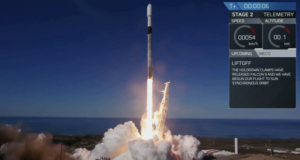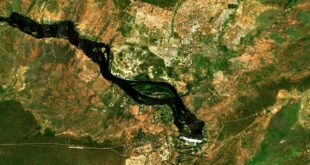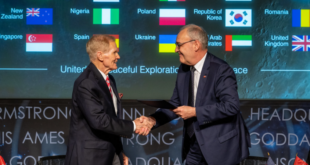
SpaceX successfully launched its Spaceflight SSO-A: SmallSat Express mission to low-Earth orbit on Monday, 3 December 2018 at 10:34am PST, from Space Launch Complex 4E (SLC-4E) at Vandenberg Air Force Base in California using a Falcon 9 satellite launch vehicle.
A total of 64 spacecraft from 34 organizations will be launched as part of the Spaceflight SSO-A: SmallSat Express mission. The mission signifies Spaceflight’s first dedicated rideshare mission to a sunsynchronous low Earth orbit and represents the company’s effort to accommodate the growing number of domestic, international, government, and commercial customers seeking affordable rideshare options to launch their spacecraft into orbit.
Spaceflight SSO-A: SmallSat Express is the largest single rideshare mission from a U.S.-based launch vehicle to-date.
The mission placed 15 microsatellites and 49 CubeSats into orbit from commercial and government entities, like universities, startups, and even a middle school. The payloads, which vary from technology demonstrations and imaging satellites to educational research endeavors, are from 17 countries, including the U.S., Australia, Italy, Netherlands, Finland, South Korea, Spain, Switzerland, U.K., Germany, Jordan, Kazakhstan, Thailand, Poland, Canada, Brazil, and India.
Spaceflight also constructed a unique payload stack, which is one of the most complex and intricate endeavours that Spaceflight has undertaken. The small satellites were integrated with a variety of dispensers and avionics to an upper free flyer and lower free flyer.
A series of six deployments occurred approximately 13-43 minutes after liftoff, after which Spaceflight began to command its own deployment sequences. Spaceflight’s deployments occurred over a period of six hours.
This mission also served as the first time SpaceX launched the same booster a third time. Falcon 9’s first stage for the Spaceflight SSO-A: SmallSat Express mission previously supported the Bangabandhu Satellite-1 mission in May 2018 and the Merah Putih mission in August 2018. Following stage separation, SpaceX landed Falcon 9’s first stage on the “Just Read the Instructions” droneship, which was stationed in the Pacific Ocean.
The launch put 15 microsatellites and 49 CubeSats into orbit (a total of 64 payloads), and is believed to have comprised the following satellites from the Asia-Pacific, Europe, and the Middle East:
Microsatellites
ESEO SITAEL Italy 1
EuCropis DLR Germany 1
Iceye 2 Iceye Finland 1
KazSTSat Ghalam LLP Kazakhstan 1
NextSat-1 KAIST South Korea 1
CubeSats
AISTECH SAT 2 AISTech Spain 1
Al-Farabi-2 Al-Farabi Kazakh National University Kazakhstan 1
Astrocast-01 Astrocast Switzerland 1
Centauri 1 Fleet Space Technologies Australia 1
Eaglet-1 OHB Italia S.p.A. and Italian MoD Italy 1
Exseed Exseed Space India 1
HIBER-2 Hiber/Innovative Solutions in Space Netherlands 1
ITASAT Instituto Tecnológica de Aeronáutica (ITA) Brazil 1
JY1SAT Crown Prince Foundation Jordan 1
K2SAT KAFA (Korean Air Force Academy) South Korea 1
KazSciSat-1 Ghalam LLP Kazakhstan 1
KnackSat King Mongkut’s U. of Technology Thailand 1
MOVE-II Technische University Munich Germany 1
PWSat-2 Warsaw University of Technology Poland 1
RAAF M1 UNSW Australia 1
SIRION Pathfinder 2 Sirion Global Pty Ltd. Australia 1
SNUGLITE Seoul National University South Korea 1
SNUSAT-2 Seoul National University South Korea 1
Suomi-100 Aalto University Foundation Finland 1
VESTA Honeywell/exactEarth Inc. UK/Canada 1
VisionCube Korea Aerospace University South Korea 1





